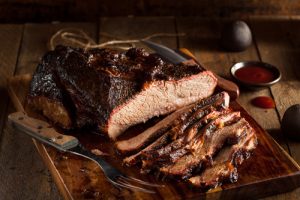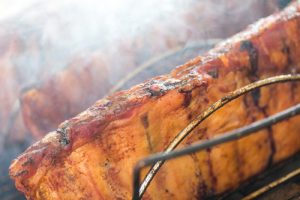Resulting in a delicious flavor unlike any other, smoked meat is both science and art. From smoked brisket to smoked sausage, fish, chicken, seafood, and even cheese, smoking is known to be a prehistoric way of food preservation – way before food preservatives and refrigerators were a concept.

Even though modern methods of preserving food are prevalent, there is just nothing like the flavorful smoked taste and aroma of smoked food. Through centuries of culinary testing, people have figured out how to elevate this archaic cooking and preserving practice; we have discovered the best smoking techniques that produce the most scrumptious smoked flavor. In today’s post, we’ve put together the skills, equipment, and know-how you need to be armed with when it comes to smoking food.
Types of Smokers
Each type of smokers comes with its own set of advantages and disadvantages. The five types of smokers are:
Electric Smokers
As the name implies, an electric smoker makes use of electricity to heat up a heating element, commonly a rod, which results in the wood smoking. This method is the easiest and most straightforward in terms of controlling heat; all you have to do is adjust the temperature by turning a dial. However, electric smokers tend to be the costliest, yet they impart the least degree of the smoked, charred flavor compared to other types. Even though you can’t get the strongest smoked taste, what you’re paying for when it comes to electric smokers is the convenience and ease of use.
Propane Smokers
Instead of a heating element, propane smokers utilize gas-fueled flame to make the wood pellets burn. These are easy and straightforward to use as well. They are also the ideal choice for those who tend to be conservative when using electricity.
Charcoal Smokers

Many barbecue enthusiasts prefer charcoal smoker over propane or electric. Many believe that charcoal imparts significantly more smoked flavor than electric or propane. Additionally, charcoal smokers are cheaper, and you don’t have to rely on electricity or any modern technology to start and keep the fire going; the only bother is you will have to get charcoal for every time you want to use the smoker.
Wood Smokers
For true-blue barbecue enthusiasts, wood smokers are the way to go. They imbue the purest and most genuine smoked aroma that you can’t acquire from the first three types of smokers we’ve talked about. However, using a wood smoker involves constant care, vigilance, and attention; it is harder to maintain at a constant heat level to keep the food cooking. Thus, we recommend using wood smokers only after you’ve mastered the basics of barbecuing.
Pellet Smokers
Pellet smokers use wood, but as opposed to wood smokers, the wood that pellet smokers use has been transformed into pellet form. Also, compared to wood, pellet smokers are more straightforward to use. Rather than stacking wood and constantly watching the flame, you only need to put the pellets in the compartment. Pellet smokers can get pricey, though.
How to Choose a Good Cut of Meat
When you’re at the butcher shop and hunting for a good cut of meat, pick one that favors the slow cooking process. Explore your options and don’t try to disregard cuts with marbling, or connective tissue and fat. Meats with lots of marbling are good for smoking as they can create true meat flavors that are delicious and succulent. You can never go wrong with smoked brisket or ribs. Pork shoulder is another excellent cut of meat that benefits from smoking. If you prefer steak, why not try Wagyu beef? If you are inclined to smoke steak, we recommend getting a bigger cut.
Bring on the Brine
Brining is the process of soaking the meat in a salt water solution to preserve and season it. It’s a foolproof way of keeping the meat from drying out. Brining is essential before you put the meat in the smoker. The salt helps the proteins in the meat absorb and hold on to more water and moisture. This results in meat that is tender and juicy. The recommended brine base is three to four tablespoons of salt to four cups of water. You can brine the meat an hour or two before you smoke it. However, for optimal water and moisture absorption, soak the meat in brine overnight. Aside from salt and water, add more flavor to the brine by incorporating herbs and spices. For instance, you can add celery seeds, fennel seeds, cloves, cinnamon sticks, mixed peppercorns, and molasses to the brine to make an incredibly moist and flavorful smoked brisket.